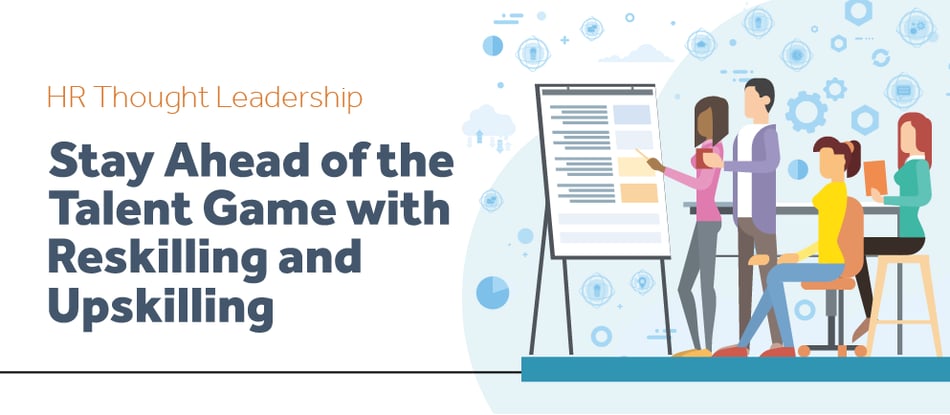How AEC Firms Can Stay Ahead of the Talent Game with Reskilling and Upskilling
IIn life, the good news must always be taken with the bad. In the architectural, engineering and construction (AEC) industry, the good news is that a massive federal infrastructure bill was signed into law that will help keep the industry growing in 2022. The question, though, is whether bad news will outweigh that good news for the AEC industry. Much like the impacts of the 2008 recession, according to an article in Civil Engineering Source, throughout 2021, supply chains, high prices for construction materials and labor shortages were affecting the entire AEC sector. So how can Human Resources departments address some of the trends that are being seen?
AEC Trends and Tackling the Challenges
Many leaders in professional services firms are tackling labor-related obstacles by evaluating their retention and talent acquisition programs. With the ongoing retirement of Baby Boomers, the increasingly technical (and digital) nature of work, rising wages and the “Great Resignation” of 2022, many employers at professional services firms are faced with skill gaps, problems attracting and hiring top job candidates and employee engagement retention problems.
Let’s take a closer look at each of these challenges:
- Feeling the Boom: With the departure of Baby Boomers, replacing the most senior and experienced professionals is an overwhelming challenge facing the industry. Most firms agree they can find new graduates, but their employment doesn’t replace those with 40 years of experience.
- Transform or Die: The pandemic required firms to rethink their digital adoption, but much of the AEC industry is still managed on paper including blueprints, design drawings, supply-chain orders, progress reports, punch lists, etc.
- Under Pressure: In the past, the main challenge was finding the work. Now one of the main challenges is how to keep the workers. Employers are feeling the pressure to raise wages or be forced with losing key talent.
- Gap-o-Rama: Graduates unfortunately don’t learn all of the necessary skills required for real-life work in the AEC industry. Additionally, with the constant change in technology, existing employees require learning new technology skills to stay competitive.
- Retaining Talent: During the pandemic, many employees re-evaluated what they wanted in life and from their employers. Many firms learned this lesson the hard way.
Despite these talent woes, there is a solution for Human Resources professionals that is right up under their noses. Reskilling and upskilling are trending talent management tools that are being explored and implemented to address these challenges and ensure that growth stays consistent and progressive. Let’s take a deeper dive into what reskilling and upskilling are and the benefits each can bring to the professional services industry.
Reskilling Versus Upskilling
Reskilling is the process of employees learning new skills to move onto new roles within their current company while upskilling is a workplace trend that facilitates continuous learning by providing training programs and development opportunities that expand an employee's abilities and minimize skill gaps. The primary difference is that reskilling prepares an employee for movement into a new role within the company whereas upskilling prepares an employee for movement in their current career track within the company. Reskilling and upskilling are not just trendy or popular remedies. The professional services industry has found benefits for both the employers and employees, so it ultimately is a win/win.
Benefits to Leaders
- Improves retention. Employees stay longer when they see evidence that their company is invested in learning and development.
- Keeps up with the industry. Maintaining highly skilled and knowledgeable employees keeps the organization competitive in the industry.
- Moderates recruiting costs. With the increasing costs of backfilling positions, reskilling might be a good alternative to letting go of current employees and hiring new ones with a different skill set, if the needs of the organization change.
- Attracts desired talent. Offering continuous staff training enhances the company’s reputation and brand image as an employer.
- Improves employee engagement. Potential and current employees want professional development and training opportunities in their job, and they will look for opportunities that provide these options. Upskilling satisfies these employee demands.
- Optimizes employee productivity. Improving employee engagement will ultimately increase productivity.
- Bridges the age gap. While generational differences can sometimes be a source of conflict in the workplace, when managed effectively, they can be a powerful source of innovation and adaptability.
Benefits to Employees
- Feel more valued. When employees believe that the company is investing in them to improve their professional profile or give them new opportunities, it reinforces their loyalty.
- Have more opportunities for career advancement. Upskilling focuses on improving current employees' skill sets, usually through training, so they can advance in their jobs and find different roles and opportunities within the company.
- Increases their professional confidence. One of the primary benefits to employees is that upskilling can help to boost confidence and develop stronger, more capable teams in the business.
- Builds better relationships between employees and managers. As managers and employees collaborate on their employees’ career paths and provide leadership and mentoring during the training and development process, knowledge sharing, trust, and respect evolve organically.
Repurpose Talent
The bottom line is professional services firms are in the best possible position with continuous technological advancement, growing leadership flexibility, and external financial resources to successfully develop and implement upskilling and reskilling programs. Executives, senior leaders, human resources professionals, talent acquisition professionals, training & development specialists, or even HRIS experts, should join the upcoming webinar “Rebounding and Staying Ahead of the Game: Attract and Retain Top Talent using Reskilling and Upskilling” on June 9th. During this webinar, find out what the so-called “Great Resignation” of 2022 is, hear case studies about other firms (especially in the AEC industry) who have successfully implemented these programs, and learn steps that organizations can take to develop a program that caters to firms’ talent management needs and goals.












